#1. Salmon Fishing Section
#2. North American Fish Species
#3. Walleye Fishing Section
If you have any tips or information that I could put in any of these sections email me at brandon_paradis@hotmail.com



Brandon (brandon_paradis@hotmail.com)
If you have any tips or information that I could put in any of these sections email me at brandon_paradis@hotmail.com



As you probably already know fly fishing requires practice and skill. You need to know how to tie lots of different knots and you probably want to tie your own flies. You also need to understand quite a bit about fly lines before you buy one. I prefer to use a floating line almost all of the time. Even if I am fishing a leech, dry fly, nymph, etc. I still like to use a floating line. All I do is make the leader longer and I usually fish my dry flies last because I like to put floatant on the tippet just to keep it sitting higher on the surface. If there is a dry fly hatch going on I will just change the tippet and tie on a new one later. I find leeches productive because they pulsate a lot in the water and the fish will almost always pick up a leech if it drifts by them. Big fish prefer to eat small bait fish such as sticklebacks, but a leach pattern will work well if you don't have any baitfish immitator flies on hand. One problem with some fish is that they will strike at the leech so it curls into a ball because it is easier to digest and as you know flies cannot curl into a ball. So sometimes a fish will strike at it and then swim away because it will not curl up. In a situation like this, it is best that you are ready to set the hook at any un-natural pause. The most productive flies in my opinion is some sort of a sculpin. I learned to tie a Deer Hair Sculpin from my uncle, and this pattern catches big fish! If you want the recipe for it, it is in the Top 10 Flies. You may have to change the colors around because the fish that I am trying to imitate are bullheads. But if you change the colors you can turn it into a perch, shad, shiner minnow, etc. depending on the materials you use.
Fly tying is an art that requires hours of practice and dedication. It doesn't just come naturally. I have developed lots of skills that have helped me speed up the process of tying flies. I have a very useful book The Art of Fly Tying. It gives you full color pictures with step by step instructions on tying all the different kinds of wings, tails, hackles, bodies, etc. I read the book a couple times and it sure helped me understand more about tying flies. Some of the patterns are a little hard to tie when you first start fly tying but for sure 98% are quite easy to tie! Now here are some fly tying tips.
When tying a dry fly wing try adding a small strand of a sparkle material such as Crystal Twist, Krystal Flash, Accent Flash, etc. It doesn't always improve the fly but sometimes when the sun flashes, it sends a quick quiver of light to fish below. This adds a little bit of life to your fly. Also you can put some in your wooly buggers tail. The pulsating and the flash is going to attract a lot of fish
If you need a simple little gizmo to hold all those cluttering tools you can build one! All you have to get is a clothes pin and four number 14 screw eyes. Put two eyes in each side of the pin. Then if you want to stain it with a dark stain do it. When you are done load in the tools.
a) Here are the standard eyes for trout flies: bead chain, lead-barbell and plastic-barbell. Also melted monofilament works great for any dry flies. It can purchased in a flyshop already melted to form eyes, or you can make these yourself which is a lot cheaper. I find better because you can make them what ever size you need. If you choose to make them yourself, don't go out and buy a 10 or 20 dollar spool and start melting!!! I would suggest that you buy a very cheap line because it doesn't matter what pound test it is because they are only eyes.
b) Loop eyes of Vernille or Ultra Chenille look good and they are easy to make.
c) Even simpler eyes can be made from a strand of antron yarn or furry foam. The only thing is they are not as durable as lead or plastic barbell eyes.
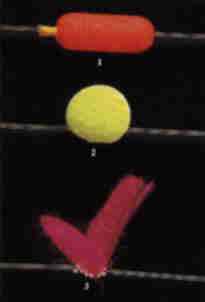
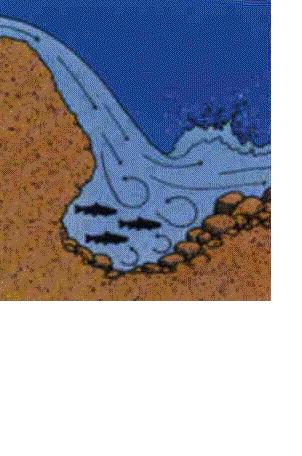


Looking for a fly that will catch giant trout? Here is one of my favorites.
Hook: Size 2 streamer hook
Tail: 2 Grizzly hackle feathers died olive. The tail is tied on matuka style with a small piece of monofilament
Body: Silver Sparkle Chenille
Head: Deer hair spun and clipped to form head
You can also add gills by tying on some burgundy chenille before you tie on the head. When you clip the head cut the bottom flat and make the chenille visible from the bottom.

Hook: Tiemco 5263, Mustad 9672, size 2-10.
Thread: 6/0, black.
Tail/Antennae: Two strands of white rubber hackle tied in a "V".
Abdomen: Black chenille upper, yellow or orange chenille under.
Hackle: Brown wrapped over thorax.
Thorax: Black chenille

Hook: Eagle Claw 214, Tiemco 5262, Mustad 9671, size 2 - 4.
Head: 3/16-inch brass bead.
Thread: 3/0, black.
Tail: Dyed black rabbit-fur strip.
Body: Dyed black rabbit-fur strip, wrapped around the hook shank.
Legs: 2 to 3 strands each of medium and small-diameter rubber hackle. Try different colors to find out what the fish are after.

Hook: Tiemco 205BL, Mustad 37160, size 8-14 (weighted).
Thread: 6/0, red.
Ribbing: Fine silver or gold wire, or tinsel.
Body: Red floss, ends trimmed short, "fore" and "aft".

Hook: Tiemco 5212, Mustad 94831, size 4-12
Thread: 3/0, yellow
Tail: Amherst or golden pheasant tippets
Body: Yellow synthetic dubbing or dyed yellow rabbit fur
Wing: White calftail or bucktail
Collar: Natural deer body hair
Head: Natural deer body hair, clipped to shape
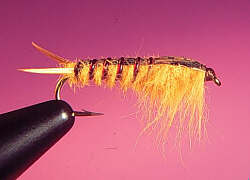
Hook: Tiemco 5263, Mustad 9672, size 6-10 (weighted).
Thread: 6/0, tan or brown.
Tail: Two ginger or yellow goose biots.
Body: Yellow or ginger rabbit fur.
Overbody/Wingcase: White-tipped or mottled turkey feather.
Rib: Amber V-rib, small.
Thorax: Yellow or ginger rabbit fur.
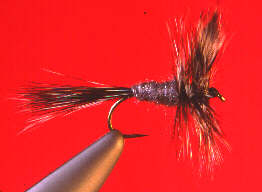
This fly is good to use when you don't know what the fish are eating
Hook: Mustad 94840 size 10- 20
Thread: Grey or Black 6/0
Wing: Grizzly hen hackle tips
Tail: Brown and Grizzly hackle mixed
Body: Medium grey dubbing
Hackle: Brown and grizzly mixed

This fly is a good producer where there are lots of sticklebacks. Also, in a lake, early morning is the best time to fish this fly.
Hook: size 2-8
Thread: Black 6/0
Tail: Medium Blue Dun hackles (tied matuka style)
Body: Metallic Chennile
Hackle: Grizzly
Overwing: White Marabou
Underwing: Blue Dun Marabou
Beard: Red Marabou

This simple little streamer is great where the fish are aggressive.
Hook: Mustad 9672 size 2-12
Thread: Black 3/0
Weight: (optional) Fine lead wire
Rib: Oval silver tinsel
Body: Flat silver tinsel
Wing: Yellow and Red buck-tail or calf-tail
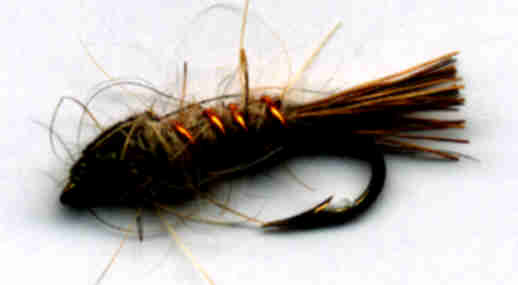
This fly is a great fly to have in your box. Be sure you have different sizes and alot of different shades. Once you find the right shade and size it is one of the most effective nymphs there is.
Hook: Mustad 3906 size 8-16
Thread: Tan or Brown 6/0
Tail: Hare's Mask guard hairs or brown hackle fibers
Rib: Fine oval tinsel or copper wire
Body: Hare's Mask dubbing (thorax thicker than abdomen)
Wingcase: Mottled turkey or goose wing quill segment
If you have a good fly pattern that you want to share with me and possibly have it put on to my page send the picture and instuctions to me, @ brandon_paradis@hotmail.com. (pictures appreciated)






If you want to have a link to your page put on my page all you have to do is send me an email! (Only appropriate sites will be linked, also you must put a link to my page on your site.)








Click here for the barnesandnoble.com Home Page

|
|
|||||||
|
Find Sports Scores, Standings and Stats: | |||||||
|
|||||||
| Downloads | |||||||||
|
|||||||||
 |
|
 |
| Loan Type |
Points | ||||||
|
|
|||||||
| Find Latest Headlines: | |||||||
|
|||||||
| |||||||||
|
Find Local TV Listings Enter Zip Code: |
|||||||
|
|||||||
|
Find Local TV Listings Enter Zip Code: |
|||||||
|
|||||||
 |
|
|
||||||